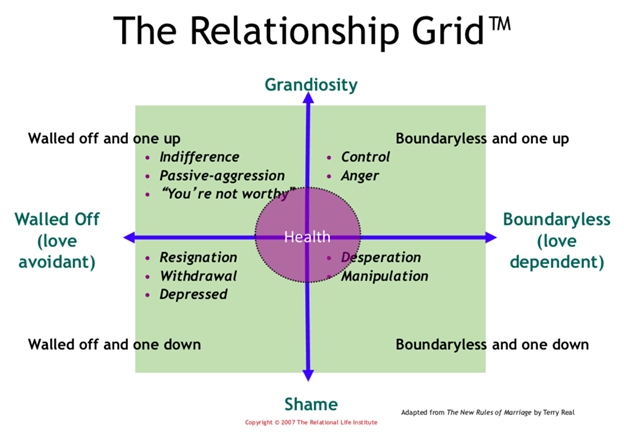A Marriage Can Die By 1000 Cuts: You Can Stop the Bleeding.
Taylor Swift’s Song About Dying Relationships is Right On.
It doesn’t always take something monumental to jeopardize a marriage; many a long-term relationship has died by numerous small things, more minor injuries, like tiny papercuts, over time. What is a big deal to your spouse may not be a big deal to you, is the crux of the problem, or maybe you don’t see what you’re doing as a problem. Still, if you don’t treat their concerns like they are a big thing and important and then take action to make it right, you are setting yourself up for a marriage crisis.
When Taylor Swift wrote the song, Death by a Thousand Cuts, she was talking about what I’ve had on my mind lately. Sometimes, it’s the seemingly small things that take a marriage down. With that in mind, I recently dragged my husband to a two-day Terry Real-sponsored marriage boot camp in San Antonio for the first time, where we went for a marital tune-up. Like many other spouses there, he did not want to go, but he did because he is a reasonable man and understands that one should probably step up when one spouse requests something like that.
Note to all those out there who refuse marriage therapy and other interventions when their spouse asks for them: You are playing with marital fire and fuel by creating the deadly hopelessness that comes hand-in-hand with the divorce decision. Avoid your spouse’s request for therapeutic intervention at your peril.
Why did a Terry Real-trained therapist like myself need to go to a marriage boot camp when I could have explained it all to my husband myself? I can only control my side of the marriage; no spouse needs their spouse to be their marriage therapist or teacher. Imagine me standing before a whiteboard lecturing my love, as I sometimes do with clients, telling him where he’s veering off course. I also know I don’t know everything and can always benefit from learning, especially from a new and different teacher. Teaching my husband wasn’t a healthy idea, so it was time to seek outside assistance in the form of a marriage intensive.
We know more than most about how to have healthy relationships, but …
Hubs and I have read Terry Real’s books and discussed the concepts before the boot camp. While I have taken the work to heart and attempted to apply what I’ve learned, I’m not sure the mister has been excellent in that department. Why? He is sure of his good intentions and may not see himself and his behavior in the negative actions Terry describes, and I know that it is tough for some to see themselves as imperfect, even though we all are.
Note №2: Wonderful, well-meaning people of integrity can suck at relationship awareness and skills, and believe me, most do. If you have never studied what a healthy relationship looks like, I’d bet my beloved Sphynx cat Mimi that you don’t know what one is. Zero percent of the couples I see have significant relationship skills and knowledge when they first come in. I see exclusively high-functioning people, meaning intelligent, mostly mentally solid people who are out in the world engaged, working, and raising families.
You can be a person of integrity and character, super-intelligent, reasonable, and well-intentioned like my husband is, and make your spouse miserable with the little things you aren’t aware you’re doing. It happens all the time. I call it death by a thousand paper cuts because the offenses on the surface are not major — they are more in the parking or speeding ticket realm of marital crimes, and yet, once your spouse has pleaded with you 50 times (or more) that they don’t like whatever it is you are doing, you had better stop doing it. If you don’t, your marital stock will drop, and the marriage itself will experience irreparable blood loss, which is how two good people end up divorced. I aim to stop this sort of nonsense through education and awareness and convincing you all to go to therapy when and if you need it. To think you can work this out alone or by telling your spouse they are the problem and not you will not get you there.
Here is the lethal paper-cut pattern, a common theme:
1. Spouse #1 sets a boundary and requests that Spouse #2 stop a particular behavior.
2. Spouse #2 doesn’t see themselves guilty of anything wrong and blows off Spouse #1’s request.
3. Spouse #2 repeats the behavior.
4. Spouse #1 seethes in resentment and frustration and may request marriage therapy to break the impasse. If marriage therapy is refused, Spouse #1 will lose hope for change and may decide to disengage to survive the marriage or end it altogether.
Results of the marital boot camp.
The good news is that the marriage boot camp helped old hubs finally understand the behavioral patterns killing us, which are very common: He believes he is always right and likes to lecture me on how to be a better person, and I do not appreciate such intrusions. I understand that he meant no harm and was only trying to help. However, most adults do not like being lectured to by other adults. The brain processes it as a parent/child interaction when married people must treat one another like equal adults. Talking down to your spouse or acting like you know what’s best for them will lead to a troubled relationship, guaranteed.
Katherine desperately needs Roger’s help with daily tasks like setting up repair people or shopping, but she won’t let him because he “doesn’t do as good a job as I would.” I may have heard this exact sentence ten thousand times in couples’ sessions.
In marriage, each person is like a different kind of animal. No one is the same. Katherine is a gazelle, and Roger is a horse, and they want, need, and approach life differently. As a gazelle, Katherine believes she is the epitome of how any animal should be, so she looks down on the horse as inferior. If the gazelle needs assistance, she must hand it over to the horse and let the horse do it his way, come what may, or stop griping and do it herself.
Obnoxious people usually have no clue that they are being obnoxious. Most people have concluded that they are reasonable, well-meaning, and helpful individuals, so what’s the problem? My niece is an atheist, and she is also grandiose and boundaryless, which I describe below. She felt it her duty to tell people that if they believe in God, they are dumbasses. She had already tried to talk me out of being spiritual and failed, “You are not spiritual, Becky, no way! I thought you were smart.”
“You’re wasting your time,” I said. “Let’s talk about something else.”
A few years later, she came to me asking for advice because she had lost a lifelong friend over this and sincerely didn’t understand why that was wrong. She explained that she felt obligated to teach people what was correct and to steer them off the wrong paths.
“How’s that working out for ya?” I asked.
“It’s not,” she said. “But why won’t people just listen to me? I don’t get it. I’m trying to help them.”
That’s the lethal phrase and justification for doing what is unwelcome, “I’m trying to help.” I explained boundaries and grandiosity to her and told her to expect to run off more friends if she continued being so self-righteous and in other people’s business. She was astounded that it was dysfunctional, but when a person is sure they’re right, that’s a typical reaction. Humility is a beautiful trait for all of us in a long-term relationship, but I have found it is in short supply.
It took my hubs a lot of courage and a willingness to set aside pride and ego to face that. His reward for having an epiphany and being mortified with himself was that my walls came down, and I went from chilly to warm almost immediately. We both welcomed and enjoyed that.
Becoming aware, combined with remorse for not seeing it before, is a recipe for genuine, lasting change. No one wants their spouse to snap into shape for two weeks only to fall back into old bad habits. It’s been a month since the Boot Camp and the behavior that sent me through the roof with frustration is nowhere to be seen. That is because he sincerely understands the damage his previous stance was causing and has completely reeled it in, like a toy you suddenly realize is deadly dangerous.
The intervention that woke him up is described below.
Gold was mined at the boot camp.
Understanding Terry Real’s relationship grid and where you usually stand in that grid in your intimate relationship is crucially important. It’s one thing I can do in therapy that stops resistant people in their tracks and gets them to understand that, yes, they may be part of the problem. Take a look:

People who spend most of their relationship in the green quadrants cannot have close, intimate relationships. Terry Real’s work shows us how to be in the pink circle, where relationships are healthy, intimate, and safe.
- The vertical blue line represents self-esteem. You belong in the pink circle if you feel good enough and of the same value as all others. If you primarily think you know better (one up) or less than (one down), you are in either the one-up or one-down quadrant.
- The horizontal blue line represents boundaries. Boundaries have to do with protecting the body and the psyche. Suppose you are in other people’s business, trying to fix or control them, saying whatever you feel like, verbally spewing on them, or shaming or punishing them for not doing what you want sexually or otherwise; you are boundaryless and violating their psyche. If you touch people or go through their things without invitation, you are violating their physical boundaries. If you are shut down, in a state of resignation, emotionally unavailable, refuse to discuss things, or avoid, you may be walled off.
- The four green quadrants. Most of us are significantly dysfunctional in our relationships, so when interacting with our spouse, we are usually inside one of the green quadrants. I grew up shame-filled and not feeling good enough, coming from a boundaryless family. So, in my early adult years, I was boundaryless and one down. Today, I practice what I preach and stay in the pink zone, though I can sometimes be grandiose and walled off with my husband when he ventures into his most common green quadrant, one-up and boundaryless. Those who feel they can teach their spouse to be a better, more responsible person in any way belong there, too.
The idea behind the grid is to show people clearly what they are doing that keeps their relationships from working. The only way we can help your relationship improve is to get you to be self-aware so you can notice the various stances in each quadrant and pull yourself into the pink zone. Your relationship will never improve or be what you want it to be if you don’t get this and apply it to your life.
If you must be correct and aim to go to your death proving it, then you might need to be single, I always say.
I spoke with a client today who worked with me (with her husband) for six months, about a year ago. She called and said they were back to their old status quo, doing the same things as before, and she wanted to know what to do. Her husband is one-up, boundaryless, and frequently erupts and spews all over her. When he does that, she erupts and spews all over him. Both are grandiose and one-up, a lethal combination.
“Did you guys not apply everything you learned in our sessions?” I asked. “Sounds like it went in one ear and out the other.”
There was silence. I told her to go back and read Terry Real’s book on the basics, The New Rules of Marriage: What You Need to Know to Make Your Marriage Work, and consider it a mandate for how they should conduct themselves. The information in this book forms the backbone of the marital boot camp.
Understanding each quadrant.
Grandiosity = To feel superior, one-up, godlike. To see oneself as worth more than another person or group. You look down your nose at others. Judgy about others.
Walled off and one-up. You know you’re right, but you aren’t into confrontations. Also known as high and mighty. Come off needless. Your wall of avoidance could be “the silent treatment, walls of words or anger, intoxication, preoccupation, charm, humor, condescension, helpless fatigue” (1) and thousands more.
Boundaryless and one up. The obnoxious person. They will not restrain themselves. They know best, and everyone else is wrong and have no problem telling people so. They likely think they must correct, improve, or teach people without invitation.
Walled off and one-down, they feel they are not good enough and, therefore, powerless. They are de-energized, disillusioned, and mired in futility. They often feel they will fail at whatever they try. They blame themselves for not being good enough in every negative outcome. Their well-being can be dependent on external people and things. At other people’s mercy, they avoid confrontation and silently seethe.
Boundaryless and one-down. They feel that they are not good enough and, therefore, powerless. Mired in futility. Will act out passive-aggressively.
At the boot camp, tape was placed on the floor to create quadrants, and each person was asked to stand in the section they felt they primarily belonged in. My husband went to the grandiose and boundaryless section, and it blew my mind — “He sees it, he gets it!” I squealed to myself.
I went to the grandiose and walled-off section because while I belonged in the pink section, most of the time when he lectured me, I moved to the upper left quadrant, shut down, and resigned myself to the hopelessness of what was happening. Still, I could do nothing about it because a grandiose and boundaryless person can be relentless when trying to show you the better way.
The grandiose and boundaryless person in couples therapy.
When I am doing therapy with the grandiose and boundaryless spouse in a couples session, they often get upset that I spend so much time talking to them. Still, we’ll never get anywhere if I don’t get them to stop their aggressive, boundaryless behavior. That has to come first. If you are the dominant, aggressive spouse in most cases, we need you to let some air out of your tires, come off your high horse, and learn that you are not the expert on how everyone else should live their lives. This can take quite a long time to undo the neural pathway that leads you to think you know what’s best for the world.
Most people tell me their parents conditioned them to become evangelists of perfection and add that they are the only ones who get to define perfection, which is somewhat hilarious, but what an ideal recipe for making other people miserable. Quite a few spouses ask me if their grandiose and boundaryless partner is a narcissist, and the answer is maybe. Many folks have narcissistic traits but can learn not to be that way. I can attest to the fact that I was raised to be a narcissist, but I only had the tendencies and was able to change. A true narcissist will not change, no matter how great a therapist is, and they get disgusted with any family therapist who tries to point out any area of their life that may be dysfunctional.
I once told a cowboy in a full hat and boots in my San Antonio office that he was wrong about how he treated his wife, and he came and stood over me in a menacing stance. I had my cell phone ready to punch emergency in my left hand and pepper spray in my right, and I told him to leave or else — it’s amazing the things one can fit in the cushions of their armchair. He was probably a narcissist; they don’t appreciate being challenged.
The first thing to do.
Seriously. If everyone could get into the pink area of the relationship grid, the world would change overnight, and you would have a healthier marriage. Read Terry Real’s books and implement what he talks about. There is nothing better than that for explaining what healthy relationships are, what traits we need to let go of, and what works and doesn’t in relationships. To me, everything he says is common sense. Does it make sense to anyone that one person can always be right? I hope not.
I have found such relief in no longer hiding behind a façade of perfection. My new normal is being a weird, quirky, flawed, imperfect woman who is okay with making mistakes. What would it take for you to embrace that stance as well? We all have major traumas that turn us into immature people emotionally, and the false masks we hide behind are part of that. Take the mask off, show us your wonderfully flawed self, value your spouse as you value yourself, and take their concerns seriously. We must up our game in relationships. Most spouses can change if they approach the issues humbly and apply themselves.
(1) The New Rules of Marriage by Terry Real. P 129.
Hello everyone — my book, I (Think) I Want Out: What to Do When One of You Wants to End Your Marriage will be released February 4, 2025 — pre-order it here. Note: I am an Amazon affiliate and may receive small compensation at no extra cost to you.
You can receive support from me by making an appointment or joining one of our support programs for those in marriage crisis. Find them here.
Check out our NEW WEB SITE and all the new information and programs for people with marriage issues. Get on our email list so you can know what’s going on to help people in relationships!
If you liked this blog post, you might also like https://medium.com/@doctorbecky/doing-couples-therapy-with-a-narcissist-32f995220238






